
Since that fateful winter of 2016, when Fuji announced it was discontinuing production of all pack film, it became clear that these cameras would fall into disuse over time. Though expired pack film is still available, it's only a matter of time before all stocks will be dried up and gone. One Instant's efforts to revive the film is limited and expensive. Although pack film will be lost, all is not lost. By using alternate film, these Polaroid cameras can still produce photos, and though they will not share the same characteristics as pack film, they have their own unique charactaristics.
Using alternate film can be as easy as loading a negative into an empty film pack then processing it in a darkroom, or as involved as removing the back and cutting the camera to fit an alternate back. Film types can be divided roughly into 3 types: negatives, instant, and roll film. Within each category are different options. If you have any questions, don't hesitate to contact me.
One particularily useful modification for pack cameras is to give them manual shutter control. Although you can work with these cameras in auto exposure mode, manual shutter speeds gives you significantly more flexibility in film types. Two different methods are provided here. One is a low tech resistor array in a 12 point switch which replaces the photo cell. Although it's easier to setup, it's not easier to use since switching to the "sunny day only" setting also lowers the exposure by 2 stops, which has to be compensated for when using this modification. The arduino method is more difficult to build, but easier to do the modification in camera, and much easier to use. It also gives you shutter speeds with 1/3 stop increments, important since the aperture can only change by full stops.
If you are wondering how far to go, just start with the first modification below and see where it goes!
A Polaroid pack film camera can use paper or film negatives without modification just by loading the negative into an empty film cartridge, then loading it into the camera. However, if using paper negatives it is best to consider the following factors:
A field developing kit which fits into a backpack can be put together to develop these negatives on the field. This will require the following:

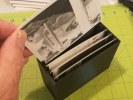
Making photos out of negatives is possible, though a method to contact print and control the exposure with ambient light would be needed, or a self contained battery powered contact printer.
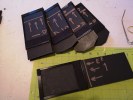
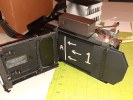
A pack film camera can be converted to use a Polaroid sized film holder, which can hold either a paper or film negative. This will require the camera back to be modified permanently, or the use of a 3D printed back, which can be downloaded here. Film holders will also need to be built. The advantage of this procedure is that you can take as many photos as you have film holders, without having to load the paper negatives on the field with a dark bag. This is more suitable for field work, though you won't see the photos until you process them. Click here for more info.
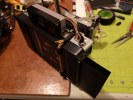
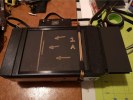
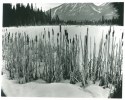
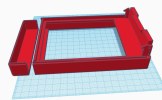
Although shooting 4x5 in a pack camera is possible, the 114mm lens does not cover the film area completely, with some vignetting on the corners. This conversion involves replacing the whole back and hinge assembly with a custom 4x5 back which uses smaller film holders which allow the back to be designed within the dimensions of the pack film body, and make it possible to shoot 4x5 without moving the rangefinder and losing the tripod socket. The film plane is moved back 18mm to allow an expanded image area beyond the polaroid sized image, so the lens body has to be moved back the same amount. Custom film holders need to be made in order to use with this conversion.
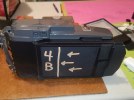
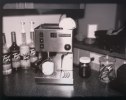
Roll film cameras, especially models 110, 110A, and 110B, are good candidates for 4x5 film because they have 127mm lenses which adequately cover a 4x5 film plane. This conversion uses the same custom film holders as the 4x5 back for pack film cameras, as they will fit within the size limits of the camera body. It is not graflox compatible but the design fits into the size and shape of a roll film camera. The conversion involves removing the 2 backs, the positive spool, and installing the 3d printed one.

Instax wide film is the closest format to pack film available. The image area is smaller and the film is integral so it has the look and feel of a typical Polaroid picture. The advantage of using Instax wide is the image orientation is correct since the film is exposed from the rear, reversing the reversed image from the lens without the use of a mirror. There are two methods: upside down and right side up mount. The upside down mount is more difficult to do, requiring cutting the camera frame extensively, but makes for a more compact conversion, though pictures are oriented upside down and the tripod socket is not available. Right side up mount is easier to do, requires less cutting, but requires access to a 3D printer to make the parts necessary for conversion. The resulting camera is thicker, but the tripod socket is retained. Click here for more details.
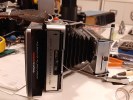
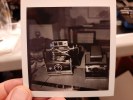
Since it's revival, Polaroid film in its SX-70, 600, and i-type formats has improved steadily. Development times are still around 15 minutes to see a good image and around an hour for it to be fully developed, but the colours are much better and consistent. The downsides to modifying a pack film camera to use Polaroid film are image orientation, and the film format.
The biggest issue I see is that photos produced from this modifcation are horizontally flipped or reversed. Writing is backwards, and things are the reverse of what you actually see. The only solution for this is to put a mirror in the light path of the subject. The next issue, the format, is characteristic of the film itself. Polaroid discontinued spectra film abruptly, which would have been the best candidate for this camera. The square format is different from the original format and photo, being a plastic envelope with transparent window makes it look and feel like a newer instant photo.
This conversion also requires a donor camera for the back. The best camera to use is a Polaroid Onestep 2 camera, which is easy to modify and inexpensive. The film handling mechanism is easily removed with a few screws and it needs to be wired to fully eject a photo with a press of a button. Click here for more details.
Polaroid pack film cameras can be easily modified to use both 120 and 35mm roll film by just using a drop in cartridge and replacing the back. Access to a 3D printer is necessary to print the parts needed for these conversions. The following formats are provided here:

This is an easy conversion which takes 12 square formatted photos per roll. The film path is fairly straight which makes it easy to implement. Information on this conversion can be found here.
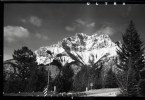
This conversion has more parts and a little more complicated, but the newest version all but removed all the friction from the cartridge. This will yield 8 photos per roll. Find out how to do this conversion here
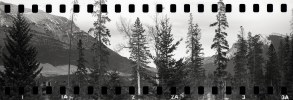
This format which includes the sprocket holes covers over 50% of the image area but is confined to the middle horizontal plane. This conversion is a variation of the 6x9 format. It requires an additional 35mm cartridge for a take-up spool and though it will work with a commercial roll of film, you will have the best flexibility using a bulk film holder. The instructions for this conversion can be seen here
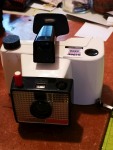
The Swinger originally took 20 series roll film which was only available as 3000 ASA film. With a fixed shutter speed of around 1/200 and a maximum aperture of f/17.5, it pretty much requires ultra high speed film. For this reason, the only format available to convert to is 120 using Ilford Delta 3200. This requires access to a 3D printer and modifications to the Swinger.
The Swinger had a reputation of taking sub-par quality photos. Pictures taken on Delta 3200 are fairly sharp and of good quality. The idea of this conversion is to use this unique camera and experience the process of taking photos with the Swinger.
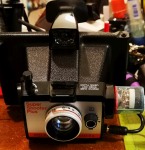
The plastic bodied Super Shooter was an inexpensive pack film camera with only 2 aperture settings for 75 and 3000 ASA film. It can be used with either ISO 100 or 3200 120 film easily, or modified with manual shutter speeds to use any film (contact me if interested in doing this). This requires a 3D printer to print the 120 cartridge and replacement back. This conversion should work with any Polaroid plastic bodied camera with the same style of back. It won't work with square format (80 series) pack cameras.
The plastic lens on the Super Shooter is surprisingly sharp. It does need to be focused accurately when using the 75ASA setting since the depth of field is small. A separate rangefinder helps and can achieve good results especially with portraits.